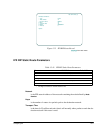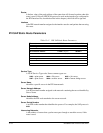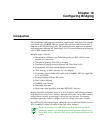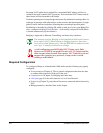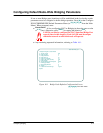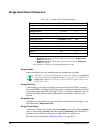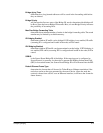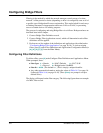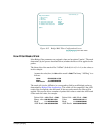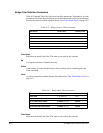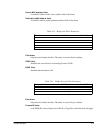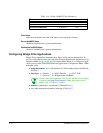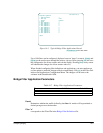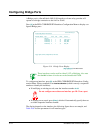
Configuring Bridging 16-5
Bridge Aging Timer
determines how long learned addresses will be saved in the forwarding table before
they are deleted.
Bridge Priority
will become the first two octets of the Bridge ID, used to determine which bridge will
be Root. Since the lowest Bridge ID becomes Root, a lower Bridge Priority increases
the possibility of becoming Root.
Max Size Bridge Forwarding Table
determines the maximum number of entries in the bridge forwarding table. The actual
number may be limited by available memory.
IP Bridging Enabled
determines whether IP traffic can be bridged. If IP bridging is not enabled, IP traffic
(assuming IP is configured and loaded in the node) will be routed.
IPX Bridging Enabled
determines whether IPX traffic can be transmitted over the bridge. If IPX bridging is
not enabled, IPX traffic (assuming IPX is configured and loaded in the node) will be
routed.
SRB ID
is the Source Route Bridge ID of the bridge. If the outgoing port is configured as
Source Route it is necessary for the node to generate the Routing Information Field
(RIF) in forwarded frames, the Source Route Bridge ID will be inserted into the RIF.
Default Ethernet Frame Type
determines the format that will be used in Token Ring-to-Ethernet translation if the
node does not know the type generated by the source device. (Once the node has
received a frame from a device over an Ethernet interface, it will know the format for
future frames.)



